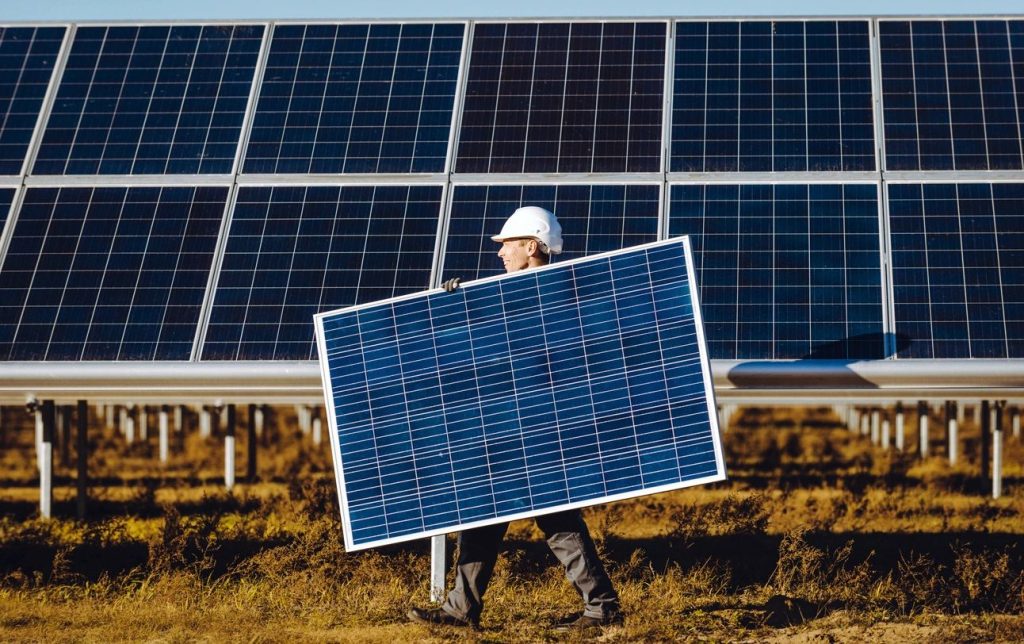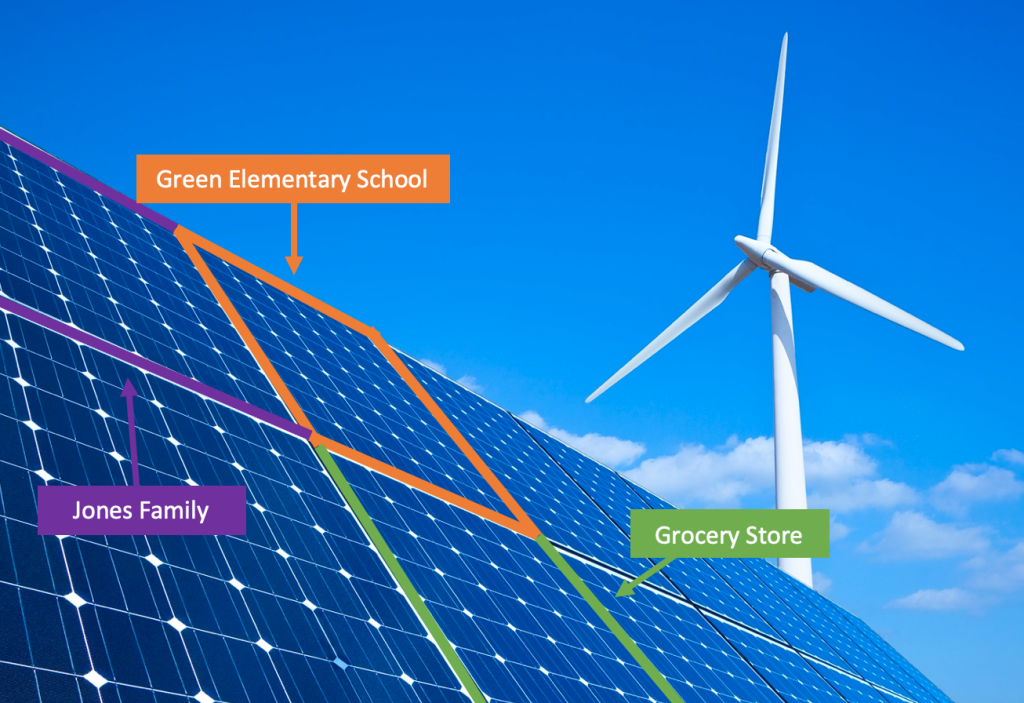Nov 03, 2021
A New Way for Localities in Virginia to Go Solar with Much Less Impact on Land

Concerns about Utility-Scale Solar Farms
Virginia has started to see a proliferation of large solar farms run by electric utilities in rural counties across the state. While utility-scale solar will undoubtedly need to play a role in a nationwide transition to more renewable power generation by increasing the percentage of renewable energy on the grid, Virginia communities understandably have concerns about large swathes of agricultural and timber land being converted to producing electricity.
By contrast, distributed solar may not use any land at all if it is installed on rooftops of buildings. Even if a distributed solar array is mounted on the ground, smaller scale means that its impact on land use is limited.
But in the past, distributed solar’s ability to produce clean energy at scale across a community was limited by state rules that prevented multiple power users from sharing the production of a single solar power project. Power from a distributed solar array could only be used by the owner of the building or land where the array was installed. By law, this solar power could not be shared among different electricity users, whether homeowners or commercial electricity customers like farms, schools, hospitals and businesses.
Fortunately, all that is now changing. New state regulations offer localities another option to provide solar power to multiple residential and commercial power customers within their jurisdictions that may be more congruous with their land use goals.
One Solar Array, Multiple Customers
In 2020, the Virginia General Assembly passed SB 629, which established a shared solar program that allows customers of Dominion Virginia to purchase electric power through a subscription in a shared solar facility.
In other states where sharing solar systems has been allowed for years, shared solar arrays have been located on land separate from any the location of any customers for the power produced by those arrays. Interested community members “subscribe” to some portion of the array, and then they receive a bill credit proportional to the energy produced by their share of the solar system. Several groups across the state are looking to expand the program across the state into the service territories of Appalachian Power and Old Dominion Power.

Sharing the Benefits of Renewable Energy
The shared solar set-up expands access to renewable energy for those who might not normally be able to participate directly, including:
- Renters
- People living in multi-family homes
- Individuals in dense urban areas without adequate space for solar panels
- Homeowners with roofs that are shaded or otherwise unsuitable to host their own solar panels
These groups have traditionally been excluded from rooftop solar. Their only option to use solar power has been to sign up for a green power program from their electric utility or a competitive provider. But such programs generally add additional cost for ratepayers and fail to deliver much if any solar power or any renewables produced locally at all. Instead, the bulk of energy sold under green power programs usually comes from out of state, and may include sources like aging hydroelectric dams or plants that burn biomass, sources that are neither new nor especially clean.
Under the new shared solar program, people who can’t take advantage of rooftop solar can now participate in and support the move to a clean energy economy. Community shared solar has also been identified as a pathway to increasing access to renewable energy for individuals and families with low- to- moderate-income.
The benefits of shared solar are not just limited to subscribers; there are also several upsides for landowners, farmers, and communities.
Bigger isn’t Always Better
Under the program approved by the state for Dominion’s service area, any one shared solar development is limited to 5 megawatts, which could fit onto as little as 25 acres. Many shared solar projects will be smaller, covering from one to ten acres of land. Such shared solar projects will be tiny in comparison to utility-scale projects being pursued across the Commonwealth, which are planned to cover as much as 3,500 acres per project.
Installing many small projects distributes the benefits of solar more widely than installing a few large utility solar projects does. Many landowners can benefit from siting a small project on their land instead of one massive property-owner. Small, shared solar projects allow for diversified ownership and financing models, so more individuals and communities can participate.
Opportunity for Innovation

Land use impacts are also alleviated with smaller arrays. With small shared solar projects, concerns that can plague utility-scale developments, like biodiversity and erosion impacts, are lessened or eliminated. By design more community-focused, shared solar projects allow for innovative dual-use solar projects, like pollinator friendly solar farms and solar sheep grazing. Shared solar projects can be sited on lower-value, marginal lands, which are not suitable for agriculture or timber production, such as the margins of fields.
There are also increasing opportunities to site solar projects on contaminated land like former factory sites or closed landfills. Such projects convert brownfields to “brightfields.” With brightfield projects, landowners and communities can convert otherwise unusable land into an opportunity to create jobs, energy, and tax revenues.
Good for Farmers
Leasing part of their land for a shared solar project can allow a farmer to keep most of her land in agricultural production while at the same time bringing in another revenue source to offset expenses and provide resiliency. Hosting a solar array on farmland can also allow for nutrient and land recharge beneath the solar panels. These sorts of smaller projects do not have the same impact on rural viewscapes that utility-scale farms can have. In fact, we like to think our array at Carilion New River Medical Center (image above) blends into the landscape quite nicely.
If you would like to see more shared solar projects in your community, reach out to your local officials to advocate for:
- Incentives for solar projects that keep land in agricultural production
- Lower thresholds for special use permits for small solar projects (under 5 megawatts or so)
Look out for opportunities to call on state legislators to expand shared solar legislation across the state during the upcoming Virginia General Assembly session.